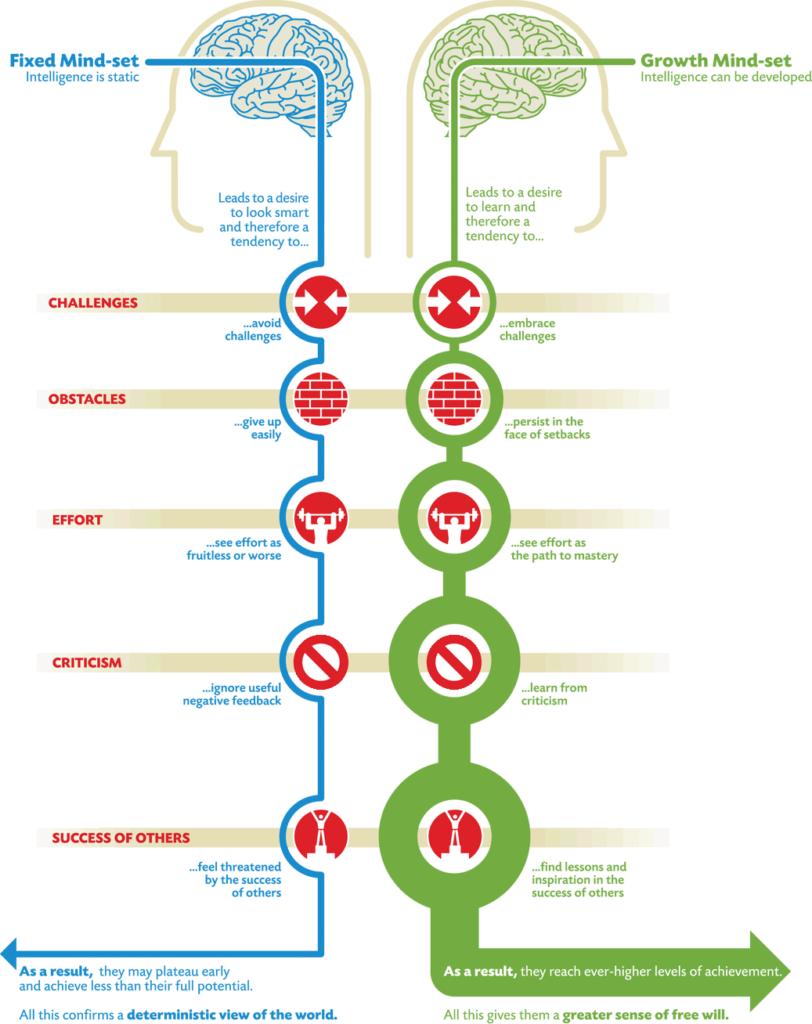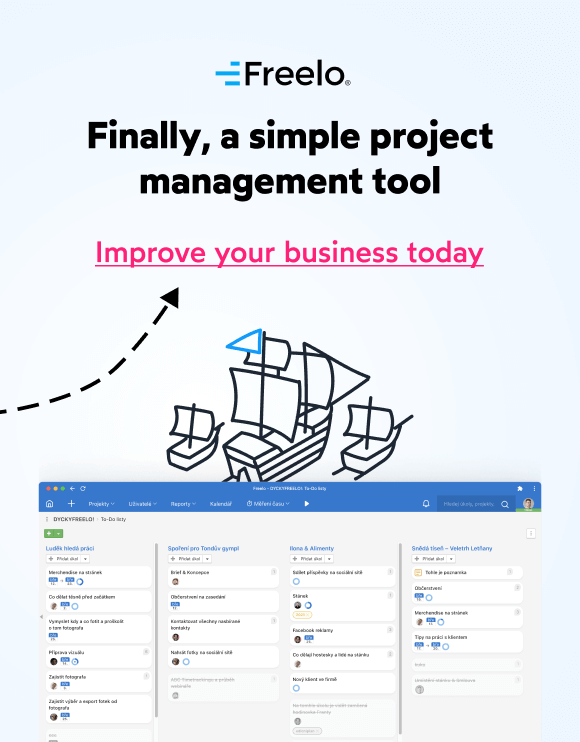Content
- Motivation is not compulsion
- The difference between motive and incentive
- Sources of motivation
- Employee motivation objectives
- Hygiene factors are not just about cleanliness
- Still, it is important to be tidy – even in communication
- Does everyone have a growth mindset?
- Satisfaction in life, aka ikigai
- Final remarks: Good practice from Freelo

Employee Motivation Theory: A Practical Taster
 Freelo team
Freelo team

Content
- Motivation is not compulsion
- The difference between motive and incentive
- Sources of motivation
- Employee motivation objectives
- Hygiene factors are not just about cleanliness
- Still, it is important to be tidy – even in communication
- Does everyone have a growth mindset?
- Satisfaction in life, aka ikigai
- Final remarks: Good practice from Freelo
Before we get into the specifics of the Overview of employee compensation, let’s recap a bit of theory. Don’t worry, we’re not going to explain Maslow’s pyramid for the tenth time. If you can safely tell the difference between motive, incentive, motivator and hygiene factor, check out the Glossary of HR and labor law terms and then jump straight to the remuneration. The rest of you, come refresh your knowledge on growth mindset, ikigai and other concepts.
Motivation is not compulsion
„Motivate him to do it,“ we often hear from experts even in everyday conversation. Often in the sense of „Make him do it.“ But in that case, the word „motivate“ functions as a mere euphemism instead of its true meaning.
In fact, motives are INTERNAL psychological drives or forces that are the cause of an individual’s actions and that pursue a specific goal. Such a goal is always the satiation of some need and therefore the satisfaction of the individual. Motivation must always come from within the individual, not from without.
The most that external influences and (managers) can do is to provide incentives on the basis of which the employee will create motivation on his own, even if only subconsciously.

The difference between motive and incentive
An incentive is a stimulus that causes changes in an individual’s motivation. It acts only in the short term. For example, a teacher threatens, „Anyone who speaks up in class will not go on the trip.“ The class goes silent. But as soon as the teacher leaves the room, there is a scream. If the children internally agreed that they needed to be quiet (had the motivation), the teacher’s presence would not matter.
The principle of stimulation is quite simple. Attractive rewards are offered in exchange for performance. The disadvantage is that performance only takes place while the incentives are active. Once they stop working, the performance also stops. You can persuade someone to do something with incentives, but it will only work for so long. Then you either have to change (add) the stimuli or change the person. 😅

The motive works without further intervention until the goal is reached. However, it is much more complex than the stimulus.
Sources of motivation
The source of motivation is needs, i.e., the lack of something that is important to a person.
- Primary needs are linked to the biological nature of man. Specifically, these are breathing, eating, and drinking. These needs must always be met first.
- Secondary needs arise from the fact that man is a social creature. Examples are the need for love, dominance, or self-actualization.
How is the satisfaction of needs 💡
Shortage (oversupply) → Need → Motivation → Goal-oriented activity → Elimination of shortage (oversupply)
When talking about needs, it is important to remember that the benefit of each additional unit consumed is less than the previous one. Therefore, the total utility function is increasing with decreasing increments and the marginal utility function (utility per unit) is decreasing.
To put it semi-popatically: when you are hungry, the first dumpling will bring you a great benefit, the third one less, and the sixth one maybe no benefit or even a negative one, because your stomach starts to hurt.

For employees, 70% of motivation is influenced by the manager. It is therefore also your job to recognize and measure employee motivation.
Employee motivation objectives
Overall, the goal of employee motivation is to gain maximum benefit from the use of the existing workforce, which improves overall performance and return on investment for the business. Read 5 reasons why motivated employees will give your company a competitive advantage.
The overall objective (maximising utility) can be achieved by various combinations of smaller objectives. As a rule, for each goal you choose between at least two ways to achieve it.
The differences are particularly (but not exclusively) noticeable in the following cases:
- Employee experience: some companies prefer to hire inexperienced people and train them themselves; others do not hire juniors at all and rely on pulling talent from competitors.
- Employee loyalty: companies either take pride in the fact that their employees stay with them for decades, planning for their development and internal mobility, while others need employees only at a certain stage of their career and count on the fact that they will eventually move elsewhere.
- Employee retention: some companies put a lot of effort into employee retention, increasing pay, adding bonuses, being accommodating, while others prefer to invest resources in recruiting new employees.
Generally, however, recruiting a new employee is a relatively expensive affair, so employee turnover needs to be limited.
Pro TIP
Motivation and commitment in the team is helped by the project tool.
How do project management tools help with motivation?
- Transparency and effective communication: with clear processes, tasks and deadlines, team members better understand their role and communicate openly.
- Tracking progress: team members can see how their work contributes to the overall success of the project.
- Task automation: saves workers time and lets them focus on more creative, and therefore more fun, tasks.
- Feedback and appreciation: quick and continuous feedback can help employees grow and improve. Recognizing their achievements can increase their motivation.
- Self-management: workers manage their own time and tasks, so they experience a greater degree of freedom.

Hygiene factors are not just about cleanliness
Your employees are paid on time, the workplace is clean and there are good relations. So why do you struggle with motivation? Perhaps because the factors listed are hygiene factors, or demotivators. If they weren’t working, employees would be angry and likely to object, but when they are working, they take it for granted.
Motivators are directly related to the job and its content. For example, the opportunity to make decisions, take responsibility, grow in my career, do work I am good at, and even verbal praise.
Still, it is important to be tidy – even in communication
Even if workplace relationships are considered a „mere“ hygiene factor, they are the most important declared area at work. The job itself is only in fifth place. Better people and better access to people are two of the most common reasons for quitting for people dissatisfied at work.


We see an analogy with Maslow’s pyramid. First, the needs on the lowest rung must be fulfilled for a person to be interested in the higher ones. Before you start promising personal development, ensure pleasant workplace relationships and working conditions.
Does everyone have a growth mindset?
„But when they don’t want to develop,“ teachers complain. Frustrated L&D specialists sometimes cheer them on. If this is indeed the case, a fixed mindset may be to blame.
People with this kind of mindset avoid challenges, give up easily, don’t accept negative feedback and, most importantly, perceive efforts as fruitless or bad. They believe that things are a given and cannot change. They are the kind of people who were told phrases like, „You don’t have the cells to learn,“ when they were kids, and they believed it.
But science shows that the brain is neuroplastic. Because of this, we can still learn, and even change our thinking from fixed to growth. Although it takes work.
As an employer, or HR employee, you have two options on how to handle information about growth mindset.
- Look for talent that already has a growth mindset. Watch how they react to obstacles, to the success of others, etc.
- Encourage employees to move from a fixed to a growth mindset. Explain the issues and support them. Work with growth mindset and existing employees during feedbacks. Avoid „you’re good at this“ evaluations but praise specific things and recognize effort.
Book tip 📚

Satisfaction in life, aka ikigai
At the beginning of the millennium, coaches and women’s magazines advised you to turn your job into a hobby. It’s certainly not a bad idea at the base, but it’s rather outdated nowadays. For one thing, not everyone has such an intense passion to turn into a profession, and for another, this advice is a kind of way to lose a hobby and burn out professionally at the same time.
Considering how much time one spends at work, surely one should enjoy it at least a little. In an ideal world, work will become an integral part of the individual and he will be interested in it even when he is not working.
The Japanese define a happy work life as the intersection of the Venn digram with the four sets and call it ikigai.
- What you love
- What you are good at
- What you can be paid for
- What the world needs

Idea 💡
Try using the concept of ikigai in recruitment. Ask the candidate what they like and if they are good at it
Final remarks: Good practice from Freelo
We find out how motivated a candidate is in the first round of the selection process using our form. Read about the entire recruitment process at Freelo.
 Freelo team
Freelo team





